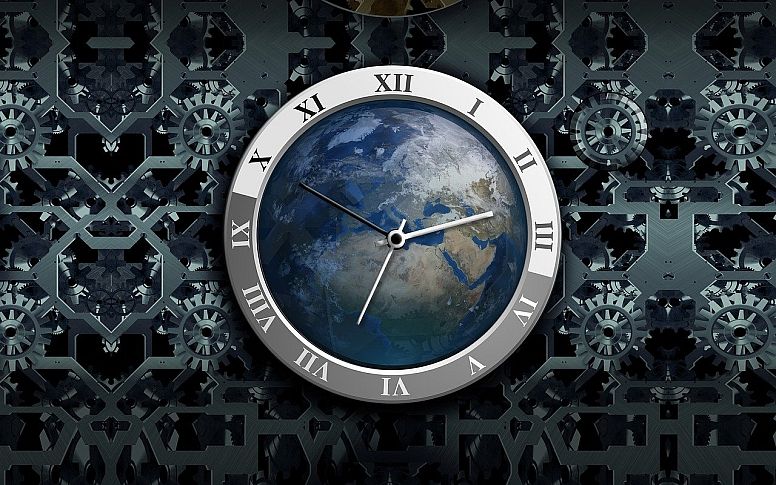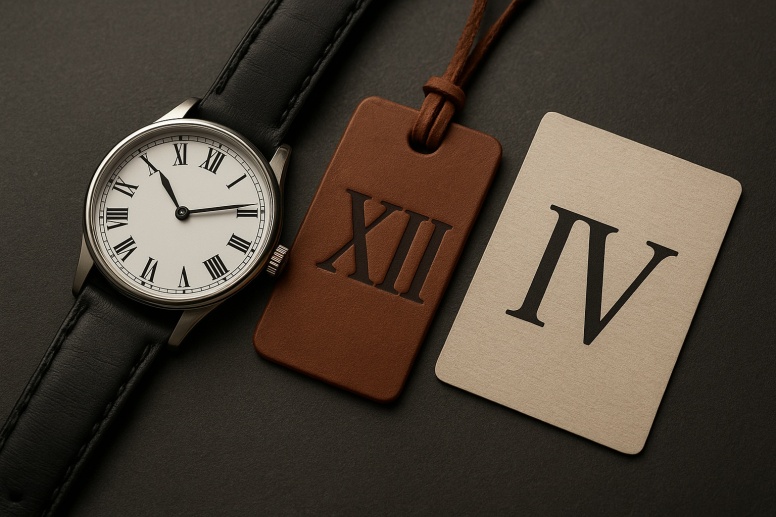
Modern Interpretations of Roman Numerals in Logo Design
Roman numerals have a rich history dating back to ancient times when they were first used to represent numerical values. Their influence can be seen across various cultures and periods of history, including the Islamic Golden Age.
Despite the advent of modern numerical systems, Roman numerals have endured and are still used today in various contexts, including logo design. In this discussion, we will explore the fascinating history of Roman numerals, their evolution over time, and their continued relevance in the modern world.
Roman numerals have been used for centuries to represent numbers, and they have continued to be used in modern times for various purposes, including in logo design. They can add a sense of elegance, sophistication, and timelessness to a logo, making it a popular choice for many businesses and organisations.
Explore modern interpretations of Roman numerals in logo design and how they can be used to create visually appealing and effective logos.
What Are Roman Numerals?
Roman Numerals are a numerical system that originated in ancient Rome and were widely used throughout the Roman Empire for various purposes, including recording dates, numbering chapters or sections of documents, and indicating quantities in accounting and commerce. Unlike the decimal system used today, which is based on combinations of Arabic numerals (0-9), Roman numerals are based on a combination of letters from the Latin alphabet, each representing a specific numerical value.
The fundamental Roman numerals are:
- I: Represents the number 1
- V: Represents the number 5
- X: Represents the number 10
- L: Represents the number 50
- C: Represents the number 100
- D: Represents the number 500
- M: Represents the number 1000
These basic symbols are combined in various ways to represent numbers greater than 1. For instance:
- II represents the number 2 (1 + 1)
- III represents the number 3 (1 + 1 + 1)
- IV represents the number 4 (5 - 1)
- VI represents the number 6 (5 + 1)
- IX represents the number 9 (10 - 1)
- XI represents the number 11 (10 + 1)
- XV represents the number 15 (10 + 5)
- XX represents the number 20 (10 + 10)
And so on.
Roman numerals follow specific rules for combination and subtraction. Generally, when a smaller numeral is placed before a larger numeral, it is subtracted from the larger numeral. For example, IV represents 4 because it is 5 (V) minus 1 (I). However, when a smaller numeral is placed after a larger numeral, it is added to the larger numeral. For instance, VI represents 6 because it is 5 (V) plus 1 (I).
Despite being an ancient numerical system, Roman numerals are still occasionally used today, particularly in contexts that evoke tradition, formality, or historical significance. They are commonly seen in the naming of monarchs and popes, numbering of movie sequels, chapters in books, and the representation of dates on clocks, watches, and buildings. Additionally, they are often utilised in logo design to convey a sense of classical elegance and timelessness.
Luxury Watches and Roman Numerals: A Timeless Pairing

Luxury watchmakers have long embraced Roman numerals as a key design element, using them to underscore the timeless elegance and heritage of their timepieces. Brands like Rolex and Cartier incorporate Roman numerals on their dials not just for aesthetic appeal, but to evoke a sense of tradition, craftsmanship, and enduring style.
The use of Roman numerals on watch faces enhances the perception of sophistication, aligning perfectly with the values of precision and prestige that define high-end horology. This classical touch serves as both a nod to history and a mark of refined taste, reinforcing the idea that true luxury is eternal.
Another compelling example of Roman numerals in modern design can be seen in luxury accessories and fashion branding. High-end timepieces, such as those from Cartier, not only feature Roman numerals on their watch faces but also integrate them into broader branding elements to emphasise heritage and timeless appeal.
The elegance of these numerals complements premium design choices, such as refined materials and sophisticated layouts. For instance, a Cartier leather strap paired with Roman numeral markers reinforces the brand’s classic aesthetic while showcasing its commitment to craftsmanship and enduring style. This fusion of traditional elements with modern luxury illustrates how Roman numerals continue to enhance brand identity in meaningful ways.
The History of Roman Numerals in Logo Design
They have been used in logo design for centuries, dating back to the Renaissance period. They were often used in the coats of arms of noble families and the designs of public buildings and monuments. In the 20th century, Roman numerals became popular in the design of luxury brands, such as Rolex and Cartier, as they conveyed a sense of elegance and sophistication.
Modern Interpretations of Roman Numerals in Logo Design
Modern interpretations of Roman numerals in logo design often incorporate sleek and minimalist design elements, such as clean lines and simple typography.
-
Representing Dates: Roman numerals are frequently utilised in modern logo design to signify significant dates associated with a company, brand, or product. These dates may include the year of the company's establishment, the launch of a particular product line, or commemorations of milestone events. By incorporating Roman numerals into the logo design, businesses can infuse a sense of history, heritage, and longevity into their brand identity, while also communicating important milestones or historical significance to their audience.
-
Denoting Numerical Values: Beyond representing dates, Roman numerals can also be employed to denote numerical values within a logo design. For instance, they may be used to indicate a specific product line, version number, or sequential order of products or services. This application of Roman numerals adds a sense of sophistication and elegance to the logo design, conveying a timeless aesthetic that resonates with audiences across different demographics and cultures.
-
Minimalist Design Elements: In modern logo design, the interpretation of Roman numerals often embraces minimalist design principles, characterised by clean lines, simple typography, and uncluttered compositions. By adopting a sleek and minimalist approach, designers can create logos that are visually impactful, memorable, and versatile across various applications and media. This minimalist aesthetic not only aligns with contemporary design trends but also ensures that the focus remains on the symbolic significance of the Roman numerals themselves, rather than extraneous design elements.
-
Integration with Brand Identity: Modern interpretations of Roman numerals in logo design are seamlessly integrated with the overall brand identity and visual language of the company. Designers carefully consider factors such as colour palette, typography, and graphic elements to ensure that the Roman numerals harmonise with the brand's personality, values, and target audience. Whether used as a standalone element or incorporated into a larger logo mark, Roman numerals are strategically positioned to reinforce brand recognition and leave a lasting impression on consumers.
-
Versatility and Timelessness: One of the key strengths of incorporating Roman numerals into logo design is their versatility and timelessness. Unlike traditional Arabic numerals, which may be subject to changing cultural or stylistic trends, Roman numerals exude a sense of classical elegance and permanence that transcends fleeting fashions. This inherent timelessness ensures that logos featuring Roman numerals remain relevant and resonant with audiences for years to come, standing the test of time in an ever-evolving marketplace.
Modern interpretations of Roman numerals in logo design offer a compelling blend of historical resonance, aesthetic appeal, and symbolic significance. Whether used to represent dates, denote numerical values, or enhance minimalist design elements, Roman numerals add a touch of sophistication and timeless elegance to logos, helping brands communicate their heritage, achievements, and values to audiences worldwide.
Examples Of Roman Numeral Logos
There are many examples of successful Roman numeral logos in modern times. Some notable examples include:
- Rolex: The luxury watch brand uses to represent the hours on their watch faces, giving them a classic and sophisticated look.
- Super Bowl: The Super Bowl logo is incorporated to represent the year of the event, adding a sense of tradition and history to the iconic sporting event.
- Cartier: The high-end jewellery brand uses its logo to represent the year the company was founded, adding a sense of history and tradition to its brand identity.
Tips For Designing a Roman Numeral Logo
When designing a Roman numeral logo, there are a few things to keep in mind:
Consider The Context:
Think about what the Roman numerals will represent and how they fit into the overall design of the logo.
Keep It Simple:
They are already visually complex, so it's best to keep the rest of the logo design simple and minimalist.
Choose The Right Font:
The font used for the Roman numerals can have a big impact on the overall look and feel of the logo.
Be Consistent:
Make sure they are consistent in size, style, and placement throughout the logo design.
They have a rich history and have been used in logo design for centuries. In modern times, they continue to be a popular choice for businesses and organisations looking to convey a sense of elegance, sophistication, and tradition in their branding. By incorporating modern design elements and keeping the overall design simple, Roman numerals can create visually appealing and effective logos.














